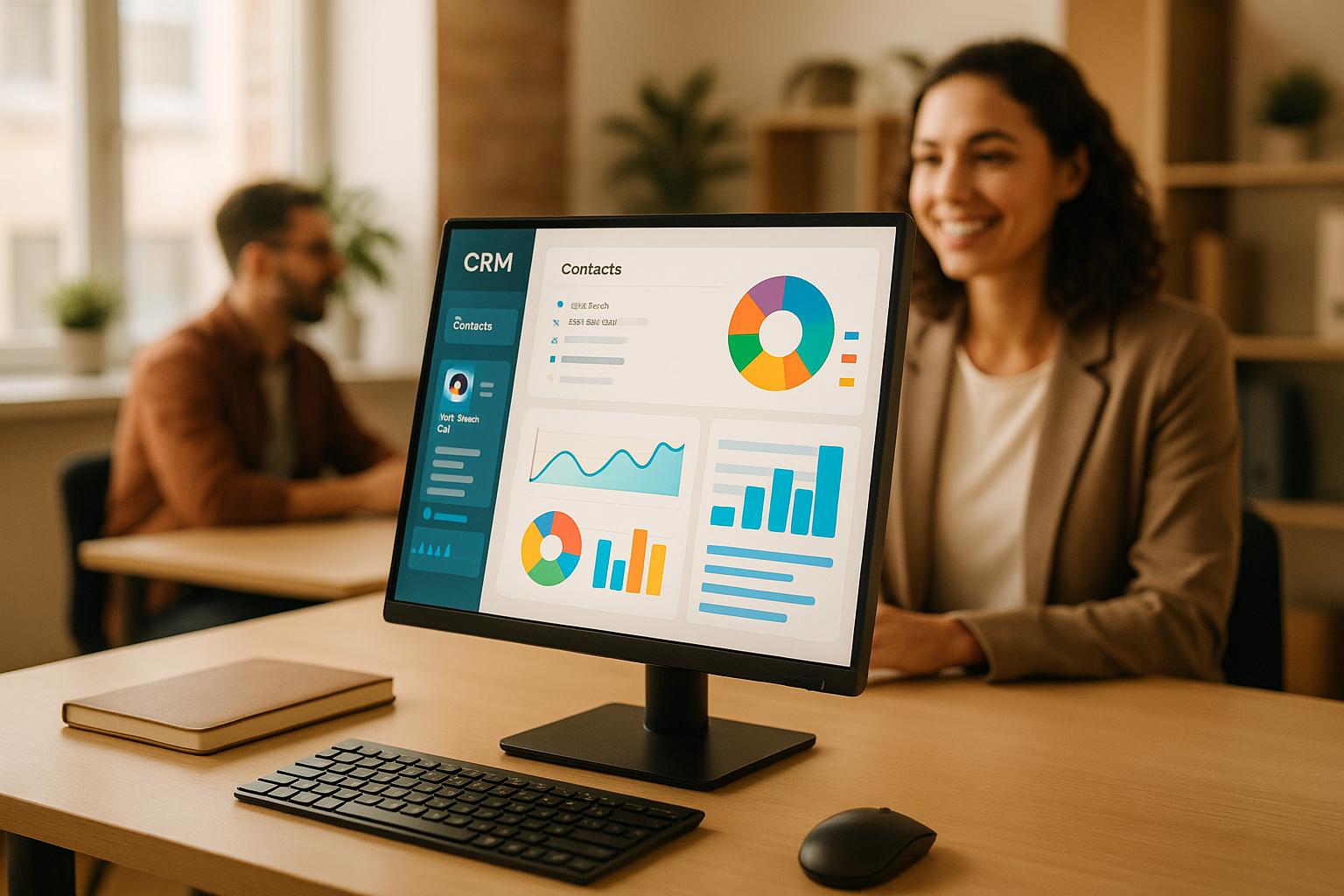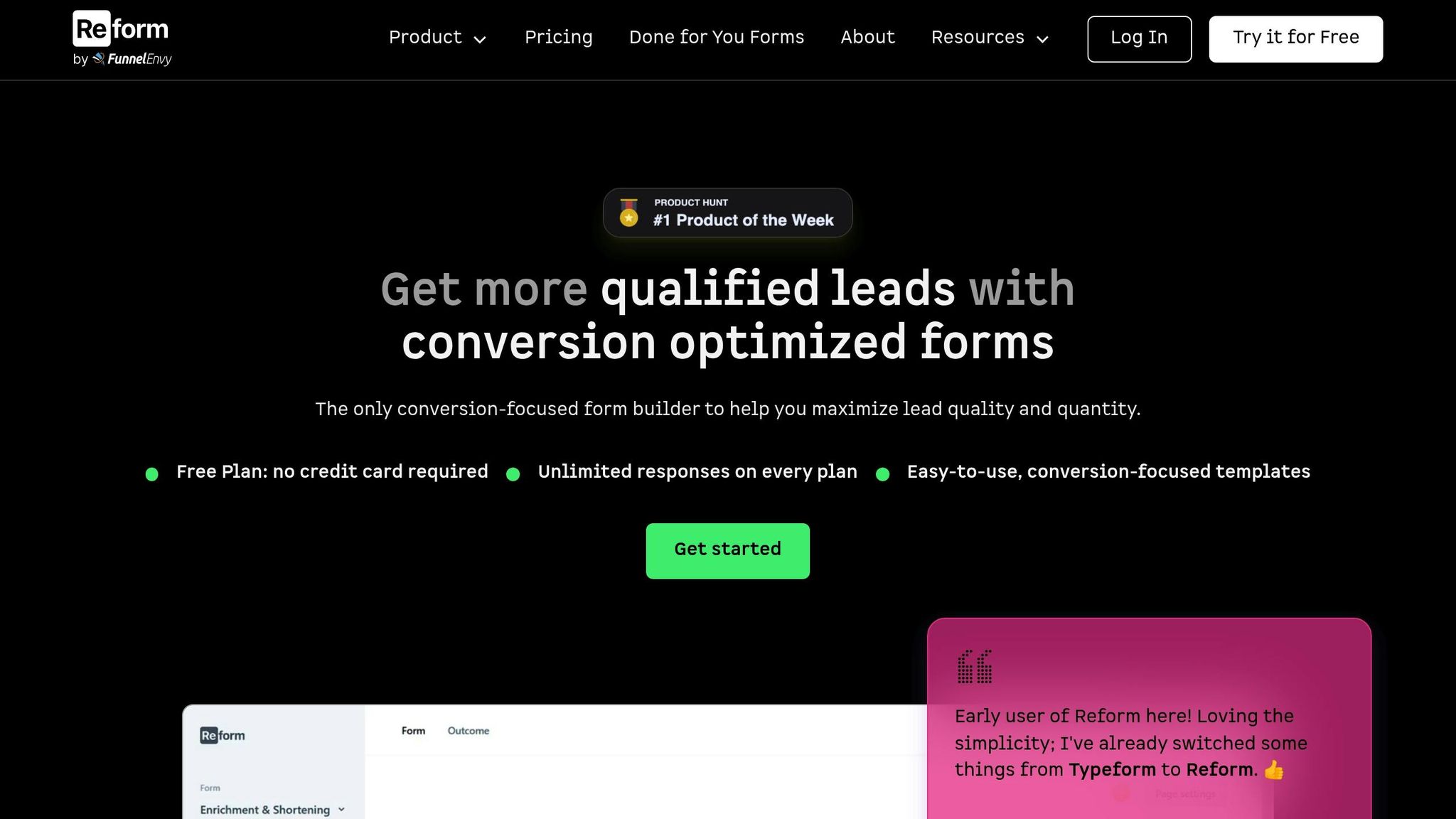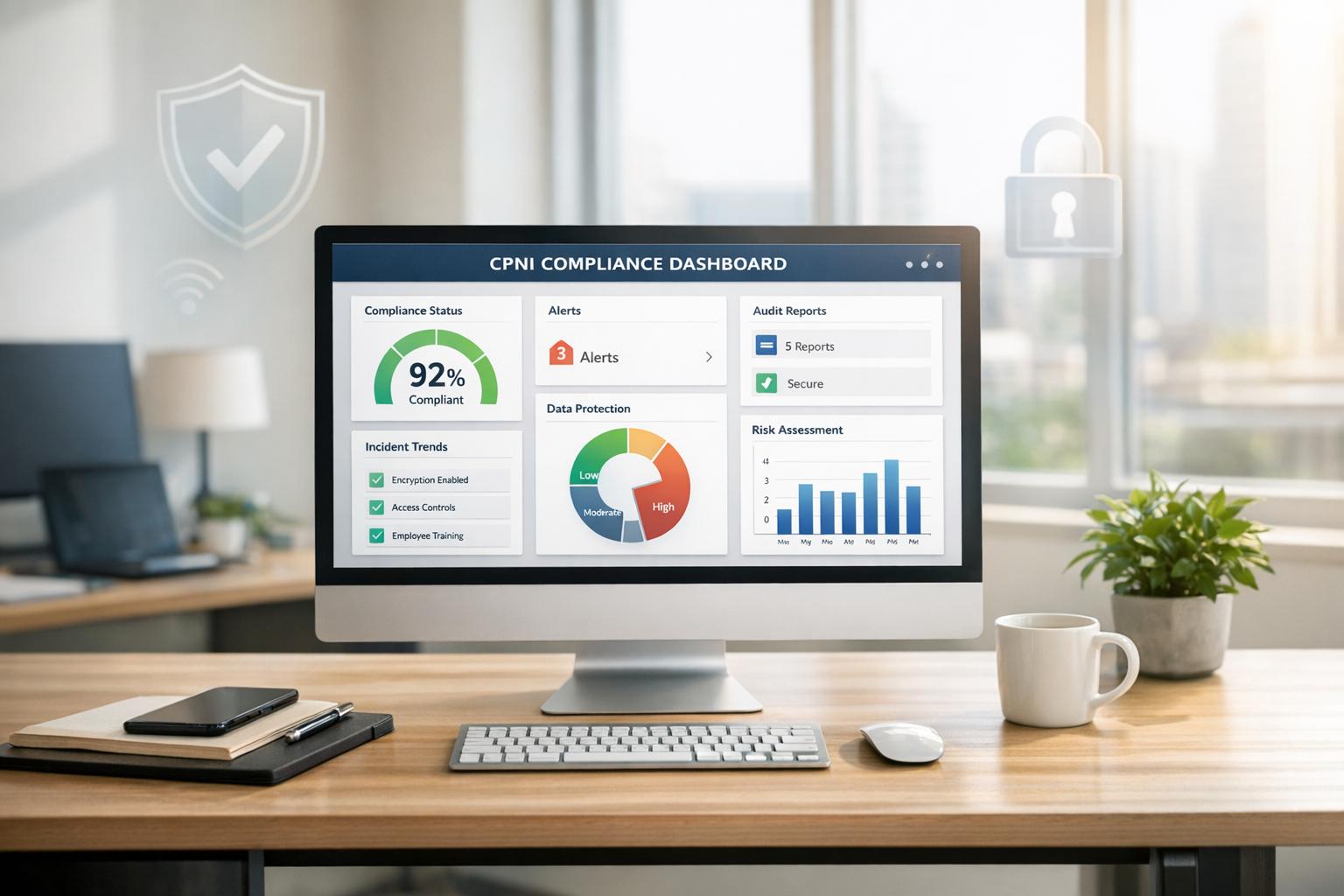How CRM Enrichment Improves Lead Quality

CRM enrichment upgrades your customer data by filling in missing details like job titles, industries, or company sizes. This process transforms basic contact lists into detailed profiles, helping you better understand and prioritize leads. Why does this matter? Poor data costs businesses millions annually, while enriched data boosts lead conversions, ROI, and sales productivity.
Key takeaways:
- What it does: Adds missing info to your CRM, like firmographics, demographics, and behavioral data.
- Why it’s useful: Helps prioritize leads, personalize outreach, and improve segmentation.
- Methods: Manual (time-consuming) vs. automated (faster, more accurate).
- Results: Up to 25% higher lead conversion rates and 30% lower acquisition costs.
- Tools like Reform: Automate enrichment, validate emails, and prevent bad data.
The bottom line: Enriched CRM data allows you to focus on high-value leads, craft targeted messages, and improve overall sales efficiency.
What CRM Enrichment Is and How It Works
CRM Enrichment Definition
CRM enrichment is all about upgrading your customer database by adding, correcting, or supplementing information that wasn’t captured during the initial data entry. Think of it as transforming a basic contact list into a powerful tool for decision-making and customer engagement. Instead of just relying on basic details like a name or email address, enrichment fills in critical gaps - things like job titles, company size, industry, technology use, and even recent business updates. These added details help keep your CRM accurate and relevant, enabling your team to create tailored interactions, improve targeting, and focus on the leads most likely to convert.
Manual vs. Automated Enrichment Methods
How you approach CRM enrichment - manually or with automation - can make a big difference in both efficiency and the quality of your data. Manual enrichment involves researching and updating records by hand, while automated methods rely on machine learning and AI to handle data gaps. Automation can save a lot of time compared to manual processes. As Henry Schuck, CEO of ZoomInfo, aptly said:
"High-quality data is the lifeblood of any successful sales and marketing organization."
Here’s a quick comparison of manual versus AI-driven enrichment:
| Feature | Manual Data Enrichment | AI Contact Enrichment |
|---|---|---|
| Cost | High ($10–$30/hour) | Low |
| Time | Time-intensive | Much faster |
| Accuracy | Prone to errors | Up to 95% accurate |
Companies using AI-powered enrichment tools often report up to a 25% boost in sales productivity and a 30% reduction in customer acquisition costs. AI-driven tools can pull data from sources like social media and online directories up to 10 times faster than manual methods, ensuring the information is both timely and accurate. That said, manual enrichment is still useful for smaller, highly targeted lead lists, like those used in account-based marketing. On the other hand, automated or hybrid approaches are better suited for handling larger volumes of inbound leads. To make the most of any enrichment method, defining an Ideal Customer Profile is key - it helps you zero in on the data points that truly drive results.
Why You Need an Ideal Customer Profile (ICP)
An Ideal Customer Profile (ICP) is like a roadmap for your enrichment process, ensuring you focus on the data that actually matters. Without a clear ICP, you risk wasting time and resources on irrelevant details. A well-defined ICP helps you prioritize data that directly supports lead qualification and targeting. For example, if your ICP focuses on companies with 100–500 employees in the tech sector, your enrichment should emphasize verifying employee counts, industry classifications, and technology usage. This targeted approach ensures your efforts are aligned with your business goals.
How to Automatically Enrich New Leads In Your CRM
How CRM Enrichment Improves Lead Quality
Building on the foundation of an Ideal Customer Profile, CRM enrichment takes your lead data to the next level, making it more actionable for sales and marketing teams. By equipping your CRM with detailed prospect information, you can make smarter decisions, focus your efforts more effectively, and ultimately close more deals.
Better Lead Prioritization
Not all leads are created equal, and enriched data helps your sales team focus on the ones that matter most. With deeper insights, your team can prioritize leads with the highest potential for conversion, rather than spreading their efforts thin across all prospects.
For example, enriched data enhances lead scoring by incorporating details like company size, industry, technology stack, and recent business activities. This precision in lead scoring can boost conversion rates by an average of 25% and, when combined with predictive models, by up to 21%. A case in point: Microsoft achieved a 25% increase in lead conversion rates by leveraging enriched data to refine its sales strategy.
Intent data adds another layer of precision. Knowing that a prospect is actively researching solutions, downloading relevant content, or visiting competitor websites allows your team to engage at just the right moment. This approach can increase conversion rates by as much as 20%.
The impact is clear: 38% of businesses report higher lead-to-opportunity conversion rates after adopting lead scoring practices powered by enriched data. By prioritizing the right leads, your team is better positioned to deliver personalized, impactful messages.
Personalized Messages and Targeting
In today’s competitive landscape, generic outreach just doesn’t cut it. Enriched CRM data gives your team the tools to create messaging that resonates with each prospect’s unique challenges and interests. In fact, 77% of marketers agree that personalized content is far more effective at driving engagement and conversions.
With detailed insights, sales and marketing teams can move beyond one-size-fits-all email templates. Instead, they can reference specific pain points, share relevant case studies, and highlight features that align with a prospect’s needs. Personalized emails, for instance, achieve click-through rates that are 2.5 times higher on average, leading to a 5.7% increase in revenue.
Behavioral data takes personalization even further. By analyzing a prospect’s interactions - such as website visits, content downloads, or email engagement - you can tailor your approach to match their interests. Companies that incorporate intent and behavioral data into their marketing strategies typically see conversion rates climb by 15–20%.
This level of personalization doesn’t just benefit marketing; it aligns your entire team. From sales to customer success, everyone can adjust their approach based on a prospect’s specific context. 63% of marketers say personalization is key to building stronger customer relationships and driving revenue growth. This tailored approach also enables more precise segmentation and nurturing strategies.
Better Segmentation and Nurturing
Enriched CRM data allows for highly targeted segmentation and nurturing. Instead of relying on broad categories like "enterprise" or "small business", you can create segments based on specific traits, behaviors, and needs. This precision ensures that the right message reaches the right person at the right time.
Real-world results back this up. For example, UserEvidence expanded its pipeline by 33% in just three months by using Cognism to enrich account and contact data. Amanda Newman, SDR Manager at UserEvidence, shared the outcome:
Since onboarding Cognism, my team's connect rates have increased, we have saved about 10 hours a week and have generated 161 opportunities in under 3 months.
Enriched data also helps you tailor nurturing efforts to match where each lead is in their buying journey. A prospect just beginning their research might benefit from educational content, while someone comparing vendors is better served with detailed product information or case studies. This targeted approach pays off: Lead nurturing emails generate 4 to 10 times the response rate of standalone email campaigns. Plus, nurtured leads often result in deals with a 47% higher order value.
The benefits extend beyond individual campaigns. Companies using enriched lead data typically see a 25% boost in lead conversion rates and a 15% increase in sales revenue. By delivering more relevant experiences throughout the customer journey, you can drive better results across the board.
What’s more, nurture campaigns powered by enriched data are incredibly efficient. Industry-leading campaigns generate 50% more sales-ready leads at a 33% lower cost. As your lead volume grows, this efficiency becomes essential, making manual personalization a thing of the past.
How to Set Up CRM-Based Lead Enrichment
Building on the advantages of CRM enrichment, setting it up effectively is key to improving lead quality. A clear, step-by-step approach ensures you maximize the value of your CRM data.
Choose the Right Data Sources and Tools
Start by auditing your CRM data. Look for gaps like missing email addresses, incomplete job titles, or duplicate accounts. Once you identify these issues, define your goals - whether it’s better targeting, segmentation, or higher conversion rates. Then, select tools that meet these needs. Prioritize options that provide verified, real-time data, integrate smoothly with your CRM, ensure strong privacy compliance, and can grow with your business needs.
With the right tools in place, automate the enrichment process to keep your data current and actionable.
Automate Data Enrichment
Manual data entry is slow and prone to errors. Automation tools solve this by continuously collecting and analyzing data from multiple sources, offering real-time insights into your customers’ behavior. By integrating automation into your workflows, you can uncover opportunities for cross-selling and upselling that might otherwise go unnoticed.
Automated enrichment consolidates information from third-party databases, social media, market intelligence platforms, customer interactions, and real-time data APIs. This ensures your CRM always has up-to-date information. For instance, companies like Bikester and Optimo have seen impressive results by combining internal data with external sources. Bikester improved email engagement by 30% and increased sales by 20% in just six months. Optimo, on the other hand, achieved a 35% boost in trial-to-paid conversions within a single quarter. Automation keeps your CRM accurate and ready to deliver actionable insights.
Build Lead Scoring Models
Once your CRM is enriched and automated, use the robust data to develop effective lead scoring models. Start by defining criteria for sales-qualified leads (SQLs) and identifying key behaviors that signal high-quality prospects. Assign points to actions based on their importance, giving more weight to behaviors that indicate strong intent. A well-designed lead scoring system can significantly improve your ROI.
Additionally, track engagement across multiple channels to adjust scores in real time as prospects progress through your sales funnel. Incorporate negative scoring to deprioritize leads that don’t fit your ideal customer profile. Regularly review and update your scoring model to stay aligned with shifts in customer behavior and market trends.
As Ryan Durling, Inbound Consultant for HubSpot, puts it:
"The biggest lift in lead scoring is not defining how many points something is worth, it's making sure everyone internally is aligned."
Finally, set up workflows to notify your sales team about high-scoring leads while nurturing those with lower scores.
sbb-itb-5f36581
Using Reform for CRM Enrichment

Reform makes CRM enrichment easier by seamlessly integrating with your CRM to capture high-quality leads. Its features are designed to improve lead quality and simplify your enrichment process. Here’s a closer look at how Reform’s tools can elevate your CRM strategy.
Reform Features for Lead Enrichment
Reform’s multi-step forms make lead capture more effective, increasing completion rates by up to 20%. By breaking down the process into smaller steps, you can gather more detailed information without overwhelming potential leads.
The conditional routing feature ensures leads are handled efficiently. For example, a B2B software company might send enterprise-level prospects directly to senior sales reps, while smaller leads are nurtured through automated email campaigns.
Email validation works in real time to catch errors and invalid addresses before they enter your CRM. This reduces bounce rates, protects your sender reputation, and ensures your team connects with legitimate prospects. Additionally, Reform’s spam filters block fake submissions, so only valid leads make it into your system.
Reform integrates with major CRM and marketing platforms, offering custom mapping and duplicate handling. As the team at Reform explains:
"As your source of truth, reliably getting your leads to your CRM is something Reform takes seriously. With custom mapping and duplicate handling, you can forget the clunky drop-in form builder your CRM offers."
Simplifying Data Collection and Enrichment
Reform takes the hassle out of data collection with smart design and automation. Its lead enrichment feature automatically pulls extra details through web crawling or lead prompts, cutting down on the manual work for your team.
Multi-step forms allow you to progressively collect detailed prospect information. For instance, you can start with basic contact details and then move on to company specifics and needs, building robust profiles that improve your CRM’s targeting capabilities.
Features like save drafts and incomplete response tracking ensure partial submissions don’t go to waste. You can follow up with these leads and combine their data with other marketing touchpoints to create a more complete picture.
Reform’s strategies have been tested across various industries, resulting in a 215% increase in qualified leads for B2B and SaaS companies. These streamlined methods enable better data collection and set the stage for actionable insights.
Real-Time Analytics for Better Lead Quality
Reform’s analytics tools provide a clear picture of how prospects interact with your forms. With real-time analytics, you can see exactly where users drop off or which questions create friction.
The platform’s A/B testing feature lets you experiment with different form designs, question orders, and conditional logic rules. This helps you refine your forms for higher qualification accuracy and better completion rates.
The analytics dashboard tracks key metrics like conversion rates, completion times, and lead quality scores. These insights help you identify areas for improvement and ensure your forms are always optimized for top performance.
Reform offers flexible pricing: the Basic Plan starts at $15/month, while the Pro Plan at $35/month includes team access and advanced integrations. For businesses with more complex needs, Reform provides Done for You services with custom pricing.
Corey Haines, Co-founder of Conversion Factory, sums up the user experience perfectly:
"Reform is amazing! You all ship so fast and the design is absolutely fantastic. In the past I've always been apprehensive about sending a form but now I love it 👌"
With its robust features and detailed analytics, Reform is a powerful tool for improving CRM lead quality and streamlining your enrichment process.
Best Practices for Maintaining Lead Quality
Setting up CRM enrichment is just the beginning. Keeping lead quality high requires consistent effort and well-structured processes. Poor data quality is a costly problem, with U.S. companies losing an estimated $3.1 trillion annually due to bad data. To ensure enriched data continues to drive lead conversion, regular attention to data quality and collaboration between teams is essential.
Regular Data Audits and Cleaning
CRM data doesn’t stay accurate forever. In fact, nearly 30% of CRM data becomes outdated every year, with as much as 30% of B2B contact records needing updates annually. Without consistent maintenance, even the best-enriched data can lose its value.
Schedule monthly or quarterly data cleanups to tackle issues like duplicate records, outdated contact details, and incomplete profiles. Research from Salesforce shows that 90% of contact records are incomplete, and 20% are entirely unusable.
Here are a few key steps to maintain clean data:
- Eliminate duplicates by using unique identifiers instead of relying on names or job titles, which can vary. Standardize formats for fields like phone numbers, names, and email addresses.
- Validate phone numbers with tools that check mobile, landline, VoIP, and DNC numbers. This ensures your sales team doesn’t waste time on disconnected numbers and helps with compliance.
- Automate cleaning workflows using webhooks or APIs to reduce manual errors. Set up validation rules in your CRM to catch bad data during entry, preventing problems before they start.
"CRM data cleansing protects revenue, deliverability, and compliance by eliminating hidden risks in your database. Dirty records - from outdated contacts to integration errors - inflate bounce rates, damage sender reputation, and undermine pipeline performance." - Allegrow
After audits, update your enrichment criteria to reflect new insights about data quality.
Updating Enrichment Criteria
Data cleaning is just one part of the equation. To keep your enrichment strategy effective, you need to refine it regularly. Update lead scoring models to ensure they align with current sales goals. What worked six months ago might not reflect today’s ideal customer profile.
Review enrichment criteria quarterly, using performance data and feedback from sales teams. Focus on identifying which data points truly impact closed deals and eliminate irrelevant or erroneous information.
- Adopt progressive profiling to gather customer data gradually at various touchpoints. Rather than collecting everything upfront, build richer profiles over time through emails, website activity, and sales interactions.
- Leverage AI-powered predictive analytics to uncover patterns in large datasets and predict missing details. These tools can also tap into social media insights to better understand customer interests.
- Integrate external data sources to keep your CRM updated. Evaluate new providers or improved offerings to determine if they can enhance your lead quality.
Make enrichment an ongoing process by automating updates with behavioral data collected from emails, chats, and website interactions.
Coordinating Marketing and Sales Teams
High data quality depends on strong collaboration between marketing and sales. Misalignment between these teams can hurt lead quality, while companies with close alignment see 24% faster revenue growth and 27% faster profit growth over three years.
Here’s how to improve coordination:
- Create a Service Level Agreement (SLA): Define clear commitments for both teams, including what qualifies as a Marketing Qualified Lead (MQL) versus a Sales Qualified Lead (SQL).
- Hold regular meetings: Use these sessions for sales to share insights and for marketing to adjust lead scoring. These discussions often uncover gaps that automated systems might miss.
- Work from shared customer profiles: Companies with shared Ideal Customer Profiles (ICPs) generate 68% more qualified leads. Ensure both teams collaborate on updating these profiles based on closed deals.
Encourage marketers to join sales calls to gain firsthand insight into customer challenges and objections. This helps refine lead scoring and enrichment priorities.
Finally, use integrated CRM systems and consistent lead categorization so both teams have access to the same data. This alignment ensures lead quality standards stay consistent throughout the sales funnel.
"Sales always thinks that marketing is ineffective at bringing high quality leads, while not understanding that they have a role to play in helping nurture the buyer along their journey. Sales needs to realize that if they wait for customers who are ready to buy, they will miss a lot of opportunities." - Kevin Smith, Consultant, The Story Architect
With streamlined processes and clear roles, both teams can spend less time on CRM updates - sales reps currently spend 17% of their time on this task - and focus more on driving revenue.
Conclusion: Getting Better Lead Quality with CRM Enrichment
CRM enrichment takes incomplete contact records and turns them into detailed customer profiles. By combining thoughtful planning with efficient processes, it helps businesses work smarter, not harder.
While implementing CRM enrichment requires careful planning, the rewards are clear. Start by defining your Ideal Customer Profile (ICP), then set up automated workflows to pull in accurate, reliable data. Build lead scoring models that rank prospects based on factors like company size, industry, and behavior. This approach allows your sales team to zero in on the most promising leads, delivering better prioritization, tailored messaging, and higher conversion rates.
Reform’s integration makes this process even simpler. Its lead enrichment tools automatically enhance form submissions with valuable prospect data, while real-time analytics monitor improvements in lead quality. Reform also includes email validation and spam prevention features to keep your data clean and reliable, ensuring only high-quality information enters your CRM.
"CRM data enrichment helps reinforce the trustworthiness of the data you gather about prospects and clients, enhancing its usefulness in decision making, strategy formulation, and personalizing client experiences. It ensures that the stored customer data is reliable, updated, and of high quality." - Eminenture
Data, however, isn’t static - it decays every year. To maintain its quality, businesses need to perform regular audits, update scoring models, and ensure sales and marketing teams stay aligned. Those who pair automated enrichment with routine data hygiene practices see the best long-term results.
FAQs
How does CRM enrichment improve lead quality and reduce marketing costs?
CRM enrichment takes your lead quality to the next level by adding extra layers of information to your customer data. This means you can segment your audience more precisely and create personalized interactions that resonate. The result? A higher chance of turning leads into loyal customers.
It also trims down marketing costs by sharpening your targeting efforts. With less wasted ad spend and more efficient campaigns, enriched CRM data allows businesses to zero in on high-potential leads. This focused approach not only delivers better outcomes but also boosts your return on investment.
What’s the difference between manual and automated CRM enrichment, and how does it affect lead quality?
Manual CRM enrichment depends on people manually researching and entering data. While this method offers a personalized approach, it often takes a lot of time and can lead to mistakes, resulting in inconsistent or outdated information.
In contrast, automated CRM enrichment leverages AI-powered tools and real-time updates to simplify the process. This reduces the need for manual work, cuts down on errors, and keeps data accurate and current. By improving data quality and ensuring it's always up-to-date, automation boosts lead quality and empowers businesses to make quicker, more informed decisions.
Why is creating an Ideal Customer Profile (ICP) important for CRM enrichment, and how can you build one?
An Ideal Customer Profile (ICP) plays a key role in improving your CRM because it helps pinpoint and prioritize leads that are more likely to turn into paying customers. By zeroing in on these high-potential prospects, you can make smarter use of your resources and improve the overall accuracy and value of your CRM data.
To create an effective ICP, start by examining your top customers. Identify key characteristics like their industry, company size, revenue, location, and the specific challenges they encounter. With this insight, you can build a detailed profile to shape your marketing and sales strategies. This focused approach not only enhances personalization but also simplifies lead qualification and increases conversion rates - helping your business achieve stronger results.
Related posts
Get new content delivered straight to your inbox

The Response
Updates on the Reform platform, insights on optimizing conversion rates, and tips to craft forms that convert.
Drive real results with form optimizations
Tested across hundreds of experiments, our strategies deliver a 215% lift in qualified leads for B2B and SaaS companies.


.webp)



